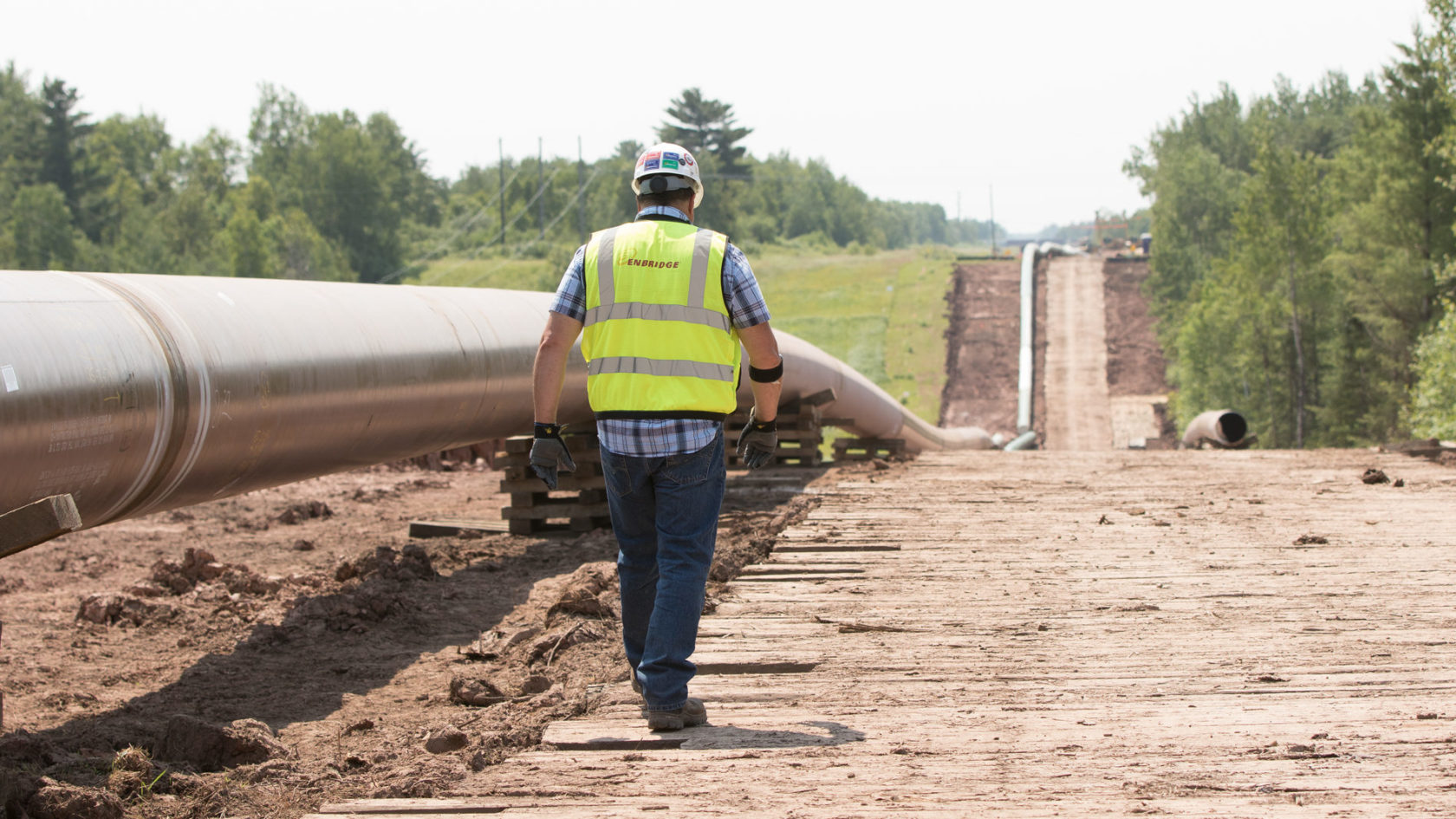Project could open new pathway to refineries on U.S. Gulf Coast

A boon for local communities
The final leg of the project in Minnesota is now more than 80 per cent complete and expected to start operations before the end of the year. It will replace aging infrastructure with a new, stronger pipeline to ensure safe delivery of reliable energy from western Canada to consumers in the U.S. and potentially beyond.
The project has been a boon for local businesses at an uncertain time, according to Minnesotans for Line 3, which says it represents more than 100,000 people from all 87 Minnesota counties.
“Line 3 and the massive investment and activity it brought to Minnesota immediately lifted businesses and communities at a critically important time following the pandemic. Having more than 5,000 people working on this project created an immediate economic impact but is also creating a positive, long-term economic impact.”
As of the end of June, Enbridge had spent US$3.1 billion of the US$4 billion budget for Line 3 replacement in the U.S. This includes more than US$250 million with Minnesota tribal communities.
New oil ready to come online
Canadian oil producers are eager for the new line to start operating, Enbridge CEO Al Monaco said at the end of July.
“Our understanding of the market here in western Canada is there’s a significant amount of heavy crude wanting to come to market from producers that hasn’t just been started up yet. That’s in the range of 400,000 to 500,000 barrels a day,” Monaco said.
“There are some very close to completion brownfield [expansion] projects with the producers that would come to market very quickly.”
In addition to supplying refineries in the U.S. Midwest, completion of the Line 3 replacement project could open new doors for Canadian oil both at the U.S. Gulf Coast and in export markets, according to analysts with Argus Media.
A new path to the U.S. Gulf Coast and beyond
The U.S. Gulf Coast refining cluster in Texas, Louisiana, Mississippi and Alabama is the world’s largest market for heavy oil like what is produced in Canada.
“We expect a new path for Canadian crude to Louisiana to open up at the first quarter of next year and that’s because of the Enbridge Line 3 project,” Argus vice-president Jeff Kralowetz told an industry webinar in late July.
Line 3 runs from Edmonton, Alberta to Superior, Wisconsin. From there the oil can feed into Patoka, Illinois, and then enter the Capline Pipeline, which is being reversed to flow south, he said.
“You’ll have all this new Canadian crude at the Gulf Coast. It’s going to substitute for Venezuelan crude that’s been pushed out by sanctions, stagnated supply of Mexican crude to the Gulf Coast, and a lot of mid-Eastern Gulf heavy crude barrels that have been redirected away from the Gulf Coast to the Asia Pacific,” Kralowetz said.
He estimates there is nearly one million barrels per day of heavy oil refining capacity in Louisiana, making it a significant market for Canadian production. From there, Kralowetz says “it’s a tantalizing prospect” for Canadian oil to access export infrastructure and reach global customers.
The International Energy Agency forecasts world oil demand will increase to 104 million barrels per day in 2040 (from 98 million barrels per day in 2019), driven by emerging economies across the ocean in Asia and Africa.
Share This:





 CDN NEWS |
CDN NEWS |  US NEWS
US NEWS 



































COMMENTARY: Activists Suddenly Care About LNG Investors